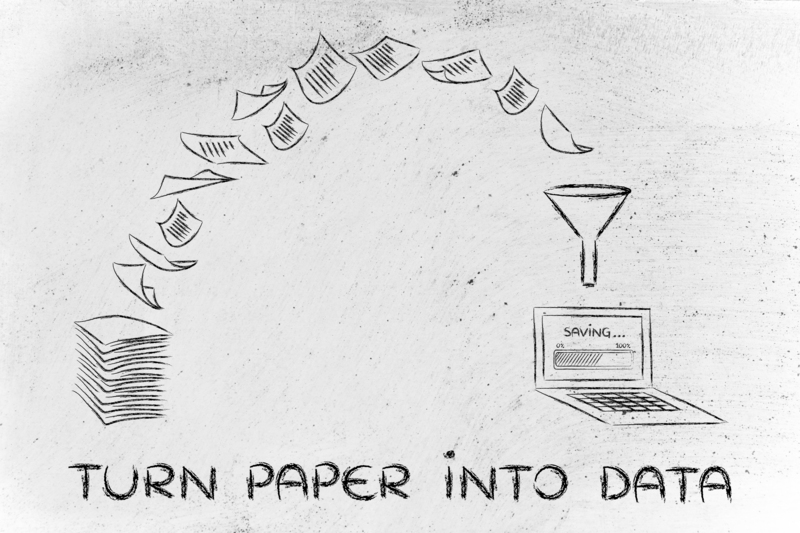The Do's and Don'ts of PPE Waste Disposal
In recent years, the proper management of Personal Protective Equipment (PPE) waste has become a crucial aspect of workplace safety and environmental preservation. From hospitals to construction sites and even our homes, PPE such as masks, gloves, and gowns have become ubiquitous. However, improper PPE waste disposal can have far-reaching health, safety, and environmental consequences. In this comprehensive guide, we'll explore the best practices and common pitfalls of managing PPE waste, offering essential tips to ensure safe, effective, and environmentally responsible disposal.
Why PPE Waste Disposal Matters
Since the onset of the COVID-19 pandemic, there has been a significant increase in the use of disposable PPE worldwide. According to environmental organizations, billions of single-use masks and gloves end up in landfills and oceans annually, posing risks to wildlife and contributing to pollution. Understanding the importance of proper PPE waste disposal is the first step towards mitigating these negative impacts.
- Health and Safety: Incorrect disposal can spread infectious diseases.
- Environmental Impact: Non-biodegradable PPE contributes to plastic pollution.
- Regulatory Compliance: Proper waste management is mandated by law in many sectors.

The Do's of PPE Waste Disposal
1. Understand the Type of PPE Waste
PPE items can be classified as general waste, recyclable waste, or hazardous waste. It's essential to identify the type of PPE waste to adopt the appropriate disposal method. For example:
- Used masks and gloves from non-medical environments usually belong in general waste.
- PPE contaminated with hazardous substances (like in hospitals or labs) should be treated as medical or hazardous waste.
2. Segregate PPE Waste at the Source
Segregation is critical for effective PPE waste management. Allocate clearly-labeled bins for general, recyclable, and hazardous PPE waste. This minimizes the risk of cross-contamination and allows for easier downstream processing.
3. Follow Local Regulations
Waste disposal requirements, especially for medical and hazardous PPE, differ geographically. Always check and follow local laws and guidelines concerning PPE waste handling, transportation, and disposal. Non-compliance can result in hefty fines and environmental harm.
4. Use Appropriate Containment
Always place used PPE in leak-proof, puncture-resistant, and sealed bags or containers, especially if there's a risk of contamination. This shields waste handlers, reduces the spread of pathogens, and prevents leaks during transit.
5. Train and Educate Staff
Conduct regular training sessions for staff and building occupants on the correct disposal of PPE waste. Ensure that everyone understands the consequences of improper disposal and knows the correct procedures.
6. Opt for PPE Recycling Wherever Possible
While not all PPE can be recycled due to contamination, some types (like certain face shields and clean plastic gloves) may be recyclable. Check with specialized PPE recycling programs or local municipal guidelines for options.
7. Consider Waste-to-Energy Solutions
In some regions, PPE waste that cannot be recycled is incinerated in waste-to-energy plants, converting waste into usable energy and minimizing landfill usage. Support innovative waste management solutions where feasible.
8. Maintain Regular Collection Schedules
Overfilling waste bins can lead to spillage and contamination. Maintain regular pick-up schedules for bins, especially in high-volume environments such as hospitals or manufacturing plants.
9. Record and Monitor PPE Waste
Keep records of how much PPE waste you generate, how it's handled, and where it goes. This helps in auditing compliance, reducing waste generation, and identifying opportunities for improvement.
10. Promote Sustainable Alternatives
Wherever possible, use reusable PPE made from washable materials or choose products with a lower environmental impact. By prioritizing sustainability, you reduce the overall volume of PPE waste.
The Don'ts of PPE Waste Disposal
1. Don't Mix PPE Waste with Regular Recyclables
Used PPE, especially those contaminated with hazardous substances, should never end up in standard recycling bins. This can contaminate entire batches of recyclables and pose health risks to recycling workers.
2. Don't Flush PPE Down Toilets or Drains
Flushing gloves, masks, or other PPE down drains can cause severe blockages in sewage systems and contribute to waterway pollution. Always dispose of PPE waste in designated bins.
3. Don't Litter or Dump PPE in the Environment
Improper disposal, such as tossing PPE on streets or in nature, leads to animal entanglement, ingestion, and ecosystem disruption. Littering PPE waste carries both environmental and public health consequences.
4. Don't Attempt to Reuse Disposable PPE
Disposable PPE is designed for single-use only. Attempting to clean or reuse single-use masks, gloves, or gowns can result in the spread of pathogens. Dispose of single-use items appropriately after use.
5. Don't Ignore Signs of Overflowing Bins
Overstuffed waste bins are breeding grounds for contamination and accidents. If you notice full bins, contact waste disposal services immediately and refrain from adding more waste until they have been emptied.
6. Don't Forget to Use Personal Protection When Handling PPE Waste
Those managing PPE waste must themselves be properly protected. Always wear gloves, face masks, and suitable clothing when handling or transporting PPE waste to minimize risk of exposure to infectious agents.
7. Don't Burn PPE Waste in Open Environments
Burning PPE waste in open spaces releases toxic fumes, including dioxins and furans, which are harmful to human health and the environment. Use only authorized incinerators or legal waste treatment facilities.
8. Don't Delay Disposal of Contaminated PPE
Prompt disposal of used and contaminated PPE is key to infection control. Storing contaminated items for extended periods increases the risk of cross-contamination and pest attraction.
9. Don't Rely Solely on Standard Waste Bins in High-Risk Environments
In healthcare and laboratory settings, use specialized biohazard or clinical waste containers for disposal of PPE. Standard bins may not provide sufficient containment or safe handling.
10. Don't Ignore Guidance from Authorized Agencies
Guidelines from bodies like the Centers for Disease Control (CDC), Occupational Safety and Health Administration (OSHA), and local public health departments are updated regularly. Stay updated and compliant with their recommendations for PPE waste management.
Effective PPE Waste Management Strategies
Onsite Waste Handling Procedures
Begin with accessible PPE waste receptacles in all high-contact zones--entrances, break rooms, washrooms, and near medical stations. Bins should be clearly marked, easy to use, and placed at strategic points to encourage compliance.
Safe Collection and Transportation Methods
Use handlers trained in biohazard precautions. PPE waste should be transported in closed bags or containers, minimizing the risk of leaks or exposure. All collection trolleys should be regularly disinfected and never used for other waste streams.
Treatment and Final Disposal Processes
- Incineration: Recommended for highly-contaminated or hazardous PPE waste. It kills pathogens and reduces waste volume.
- Autoclaving: An alternative method where available, suitable for medical plastic PPE, by sterilizing waste before landfill disposal.
- Landfill Disposal: For non-recyclable, non-hazardous PPE. Ensure landfills are properly lined and monitored to prevent leaching.
Promoting Awareness and Accountability
Education campaigns within the workplace or community can dramatically improve PPE waste disposal rates. Use posters, digital reminders, and staff meetings to reinforce correct behavior.
Legal and Ethical Obligations of PPE Waste Disposal
Failure to properly manage PPE waste not only risks regulatory action but also breaches ethical responsibilities to society and the environment. Businesses and organizations must:
- Follow all statutory waste management rules and obtain necessary permits.
- Ensure suppliers and disposal partners practice responsible waste handling.
- Maintain transparency in waste management and offer proof of compliance when requested.

Frequently Asked Questions (FAQs) on PPE Waste Disposal
-
Can I recycle disposable masks and gloves in the regular recycling bin?
Generally, no; most disposable masks and gloves go to landfill or specialized recycling programs due to contamination risk. Never place them in household recycling. -
What should I do if no dedicated PPE bins are available?
Place used PPE in a sealed bag before throwing it in the general waste bin, and request your management or local authority to provide dedicated containers. -
How often should PPE bins be emptied?
In high-traffic or clinical environments, bins should be checked multiple times daily and emptied as soon as they are two-thirds full. -
Can I compost PPE made from "biodegradable" materials?
Only if explicitly labeled for home composting and if not contaminated with hazardous substances. Consult local composting guidelines. -
Are there penalties for improper PPE waste disposal?
Yes. Depending on location and severity, penalties can include fines, business closures, or criminal charges in cases posing public health risks.
Conclusion: Responsible PPE Waste Disposal for a Safer Tomorrow
With the surge in PPE usage, it's more important than ever to practice proper PPE waste disposal--whether at work, in healthcare, or at home. By following the do's--segregating, containing, educating--and avoiding the don'ts--mixing, flushing, littering--we can protect our communities and our planet. Adhering to regulations, investing in staff training, and supporting innovative disposal options further ensure a safer, cleaner future for everyone.
Remember: Every individual action makes a difference. Dispose of PPE waste responsibly and encourage others to do the same.
